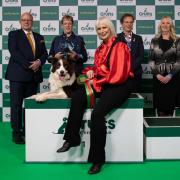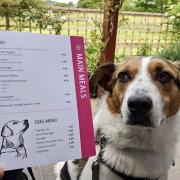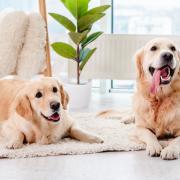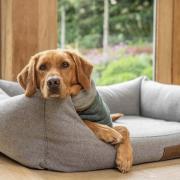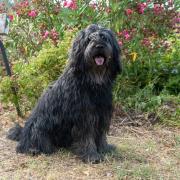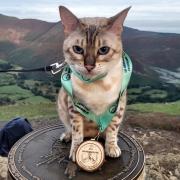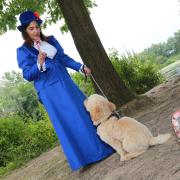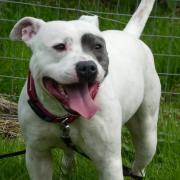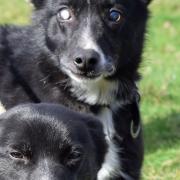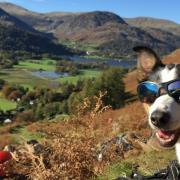Emily Rothery answers a call of the wild

High above Coniston Water there are howls, sounding uncannily like wolves, echoing eerily through the mist-shrouded forest. More than 100 huskies and malamutes have gathered with their handlers preparing to take on the two-day challenge of a sled dog rallying in Grizedale.
The four and a half mile course is undulating and muddy but the dogs are raring to go and their handlers urge these canine athletes on as they power along the forest tracks. I have heard of one handler who sings to his racing hounds but today there are only enthusiastic whoops and hollers.
Fifty teams have entered the Alaskan Malamute Club of the UK event, including a junior team and the atmosphere seems to be one of camaraderie rather than competitiveness although, of course, they all want to win.
The competition is split into classes based on the number of dogs per team and their breed. The teams run against the clock rather than against each other and are timed over the two days with the quickest being the winner. The largest team has six dogs.
Colin and Andrea Brighouse have travelled from Blackburn to race. ‘Our dogs are all friendly and approachable but, once their harnesses are on, they will know that it’s time to run. It’s what they’re hard-wired to do,’ says Colin.
‘Andrea is running with four dogs on the rig today and I’m running with one. It will be the first time I’ve raced with one dog and a bike so that should be interesting especially as my dog, called T-bag, has a mind of her own. She’ll dictate the race so we’ll just have to wait and see what happens.’

T-bag, a beautiful chestnut brown Siberian husky, looks on with an aloof expression. ‘She’s too bright for her own good,’ laughs Colin. ‘She’s worked out how to open the latch on the gate or move a chair to get to what she wants.’
Andrea is the first to run with Siberian huskies Slinky and Nesti at the front of her team. ‘Nesti is small but a fast, powerful runner and Slinky is good at commands and a great leader. He links the team together,’ she says. ‘Slinky won the British Championship two seasons ago. He was re-homed to us and is the dog that everyone would love to own.
‘Sister and brother Tar and Mac will run at the back – they usually run as a two dog team. Their strength lies in their power. They are huskamutes, a mix of Siberian husky and Alaskan malamute. If we were running six dogs, the middle dogs would be called the swing and they would keep the momentum going.’
With a cool head and bags of enthusiasm, Andrea keeps her team at a steady pace and completes the four and a half mile course in a respectable time of 35.47 minutes, coming fifth. Colin is one of the last to race and, as predicted, T-bag is not fully in race mode. She decides to investigate and takes the course at her own pace, yet still manages to come third with a time of 33.24 minutes.
Colin and Andrea have also brought along their two 21-week-old Siberian pups. ‘Siberian huskies are smaller but very fast. These are bred for speed so I’m pinning my hopes on them when they mature.’
Siberian huskies were bred for their multi-purpose work, such as hunting, herding and hauling light loads and are known for their strength, endurance and ability rather than brute strength. The original dogs were bred and greatly respected by the Chukchi people who relied on their help in the extremely harsh environment of the Siberian Arctic.

Modern sled dogs come in many shapes and sizes and a wide variety of colourings, from as small as 30lbs up to 70lbs or more and they can run up to 20mph.
‘Alaskan huskies and hounds are better for the bigger races or longer treks. Malamutes are steady plodders. The ideal working temperature for sled dogs is –20. They love cold weather and we see a massive difference in their performance when temperatures drop.’
The decision to welcome a husky into your life is a big one and will affect you in many ways, as Colin explains. ‘Huskies are not easy to train to walk on a lead. They have a high prey drive and are incredibly skilled escape artists. Many are re-homed because the owners can’t cope with them.
‘We got Tar and Mac as puppies, just as pets, four years ago but then we found out about racing and that opened a whole new world for us.’ Andrea adds: ‘All of our dogs are pets and share our settee. There are 11 dogs, a cat, a snake and seven people in our household. Mac has become our alpha male and Tar is the matriarch – she keeps everyone in check.’
Colin and Andrea have a strong bond with their dogs and share a great sense of humour – probably essential with such a busy household needing a lot of physical and mental stimulation, not to mention digging holes in the garden and leaving a trail of fluff.
‘We train our dogs three times a week and cover about two and a half miles on trails at the site of an old colliery at St Helens. We’ve mostly competed in the Siberian Husky Club events but have come to Grizedale this weekend as AMCUK have open races so mixed breeds can compete. We just love to run our dogs and race for fun.’
For further information look on the AMCUK website or www.whitewalker.co.uk




